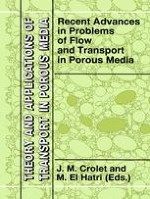1998 | OriginalPaper | Chapter
Flow of Multicomponent Gas Condensate Mixtures in Fractured Porous Media
Authors : A. Gritsenko, R. Ter-Sarkisov, A. Shandrygin
Published in: Recent Advances in Problems of Flow and Transport in Porous Media
Publisher: Springer Netherlands
Included in: Professional Book Archive
Activate our intelligent search to find suitable subject content or patents.
Select sections of text to find matching patents with Artificial Intelligence. powered by
Select sections of text to find additional relevant content using AI-assisted search. powered by
Modeling a gases and liquids flow in fractured porous reservoirs was significant developed in last decades. To the present time there are already various mathematical models of fractured porous medium. The most known of them is double-porosity model offered by Barenblatt, Zheltov and Kochina [1], Warren and Root. P.1. [2]. The main assumptions of this model are the follows. Global flow occurs primarily through the high-permeability, low-effective-porosity fracture system surrounding matrix rock blocks. The matrix blocks. contain the majority of the reservoir storage volume and act as local source to the fracture system. There is pseudo-stationary exchange between fractures and porous blocks (a flow rate is proportional to a difference of average pressure in medium). Later, Kazemi [3], Duguid and Lee [4] and Evans [5] incorparated the double-porosity concept into numerical model. Improvement of a double-porosity approach and also double-permeability concept then was made by many authors. As a generalization of the double-porosity concept, Pruess et all [6,7] developed the MINC method, which treats the multiphase and multidimensional transient flow in both fractures and matrix blocks by a numerical approach. The MINC method involves discretization of matrix blocks into a sequence of nested volume elements. In this way, it is possible to resolve in detail the gradients (pressure and etc.) that drive iuterporosity flow.
